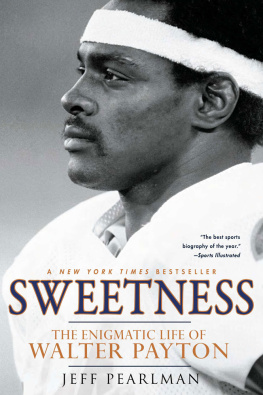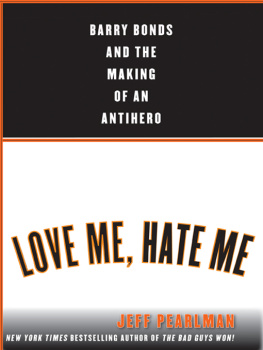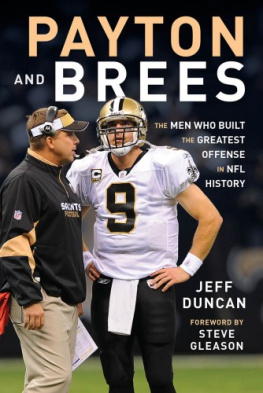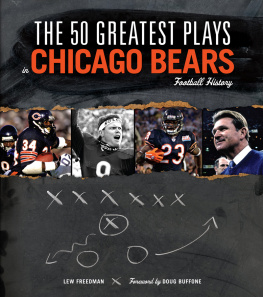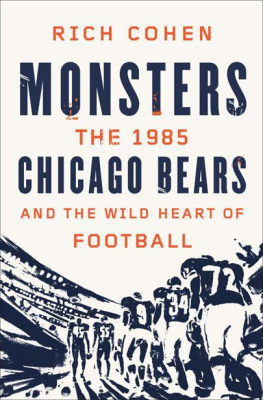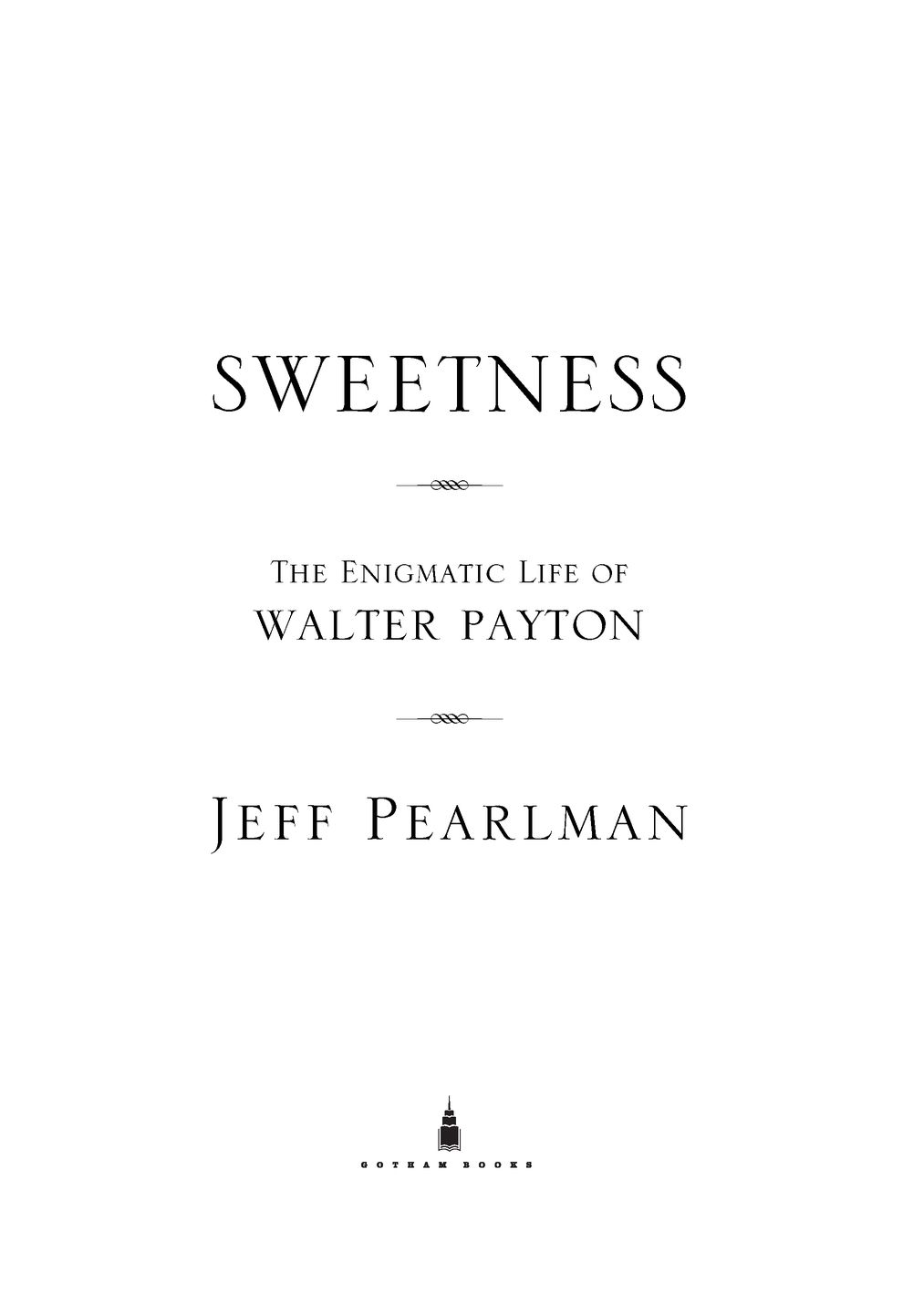Table of Contents
A NOTE ON SOURCING
The identifications of four sources are protected by pseudonyms through this book. They are: Lita Gonzalez, Nigel Smythe, Angelina Smythe, and Judy Choy.
As an author, this is not something I relish. However, the contributions of the individuals were deemed more valuable than the names themselves.
To Cathy Lieberman
The embodiment of strength and compassion
Most of life is a falling away.
A gradual surrender of the dream.
The reason sports provide such
dramatic material is that the climax
comes so early in a mans life,
the decline so swiftly.
The Athlete, author unknown
PROLOGUE
THE OLD MAN ANSWERED THE DOOR. I DIDNT SHUDDER OR TAKE A STEP BACK or cringe or gasp or stammer. I simply looked him over, hunched and shriveled inside a fleece jacket, a blue taxi drivers cap pulled low atop his head.
I had been told ahead of time that Walter Paytons administrative assistant would likely greet me at his Hoffman Estates, Illinois, office on this arctic February morning in 1999, and while I didnt picture the person to be a senior citizen, it wasnt beyond the realm of possibilities that Paytonlong known for his big heart and common-man sensibilitieswould give a seventy-year-old the job.
And who are you? the man asked.
Hi, I said. Im Jeff Pearlman with Sports Illustrated. I have an appointment.
Uh... yeah, he said. I suppose you do.
Yes, I said. Im here to see...
Then I stopped.
And gasped.
With a tilt of his head, I noticed something jarring: The old mans eyes were yellow. Not light yellow, either. It appeared as if all the white had been drained from the sclera, replaced by the bright hue of a YIELD sign. That wasnt all. Upon closer inspection, his cheeks were sunken, his shoulders coat-hanger thin, his forearms mere pencils.
He was not old. He was sick.
Nice to see you, the man said, nodding wearily before extending a hand. Im Walter Payton.
That was the first time I met him.
That was the last time I met him.
We spoke for no more than thirty minutes. He sitting behind a desk, metwenty-six years old and nervous as all hellfiddling with my pen and notepad. A couple of days earlier, Payton had announced in a press conference that he was suffering from primary sclerosing cholangitis, a rare disease in which the ducts that drain bile from the liver become inflamed and blocked. It was flabbergasting newsnot merely because, at age forty-five, Payton was still relatively young, but because he was the last person you would ever think this could happen to.
Forget that Payton was the NFLs all-time rushing leader, or that he is arguably the leagues best-ever all-around football player, or that he missed but a single game over thirteen seasons. In the course of researching this book, Ive heard five hundred different descriptions of Paytons unparalleled physicalityof the weights he lifted; of the linebackers he pulverized; of the cocksure muscleheads he arm-wrestled to submission; of the grip that, according to an old Bears fullback named John Skibinski, took hold of you like a vise, until your hand turned blue and numb. My favorite analogy came from one Richard McMurrin, a building superintendent at the Chicago Bears training complex in Lake Forest, Illinois, and a man not drawn toward exaggeration. Walter, McMurrin told me, was like a cannonball with skin stretched over it.
Although he had been retired for twelve years at the time we met, football players old and young still mythologized Paytons Hillan incline that once stood near his house in Arlington Heights, Illinois. It was just sixty yards long but rose at an angle of 75 degrees, with loose dirt and small rocks and pebbles making footing treacherous. All off-season long, Payton would be sprinting the hill, up and down, up and down, up and down. Hed invite some of the guys to work with him, said Vince Evans, a former Bears quarterback. If you hadnt been to the hill before hed look at you and laugh, because Walter would just climb up that like a bobcat. And youd follow in his dust. I was a pretty good athlete, so the first time I said, This aint nothing. Well, halfway up I was sucking air. Once that one was over, he said we were going to do ten more. Ten? That was the real eye-opener to this guys power.
So how the hell did this make sense, me fidgeting before a man who looked nothing like the five foot ten, 205-pound ball of iron from McMurrins memories? According to the public statements of his doctors, Payton needed a liver transplant to survive beyond two years. That was, it turns out, incorrect. By the time we met, Paytons body was already ravaged by bile duct canceran awful byproduct of primary sclerosing cholangitis. His odds of survival? Infinitesimal.
I can only imagine what Payton must have been thinking, staring at a trembling Sports Illustrated reporter a mere four years removed from college. Im dying, and this is who you send? He had that right. I was completely unqualified. I knew nothing about liver disease, little about suffering, and even less about death. In the entirety of my life, I had lost only two close relativesboth grandparents in their eighties.
Im dying, and this is who you send?
The interview was mostly me looking down at a sheet of paper with a list of medical terms, reading a few words, then glancing Paytons way and saying, So, uh... eh... are you in a lot of pain? He was polite enough, under the circumstances, but surely as anxious to end things as I was. When my father inquired later that evening what it was like meeting a football player whose poster once graced my bedroom wall, I didnt hesitate. Worst experience of my life. I sighed. Like watching a superhero die.
More than a decade has passed since my visit to Hoffman Estates. In that span, I have gained a wife and two children. Ive written four books, penned a slew of bylines, traveled a good chunk of the world. I have seen and lived and smelled and tasted and heard. It has been a mostly blissful ride, packed with enough highs to minimize the scattered lows.
Through the years, interviews have come and interviews have gone. Ill occasionally dig through the yellowed scrapbooks, stumbling upon stories Id completely forgotten about. Ronnie Duquette, the sneaker collector from Oregon. A Mahopac High School football player named Mark Dessi. Theo Ratliff, gangly 76ers center. On and on.
Never, however, have I forgotten my thirty minutes with Walter Payton.
I can still see the brightness of his jaundiced eyes. I can still feel the frailty of his handshake. Most important, I can still hear his voice from that daya strained-yet-high-pitched blur of words and phrases. Throughout this process, I have used that voice as a guide.
This is the first time I have written a biography of the deceased, and as other writers warned, the process is incomparable. One doesnt merely become obsessed with the subject. He chases it. Studies it. Craves it. Relentlessly obsesses over it. Dreams about it. Is haunted by it. Just two nights ago I was startled out of a deep sleep by yet another Walter Payton apparition. We were sitting in a vacant apartment. He was wearing a white T-shirt and shorts, with a rainbowcolored headband encircling his radiantly glistening Jheri curl. Are you finding what you need? he asked. Do you get me yet?

